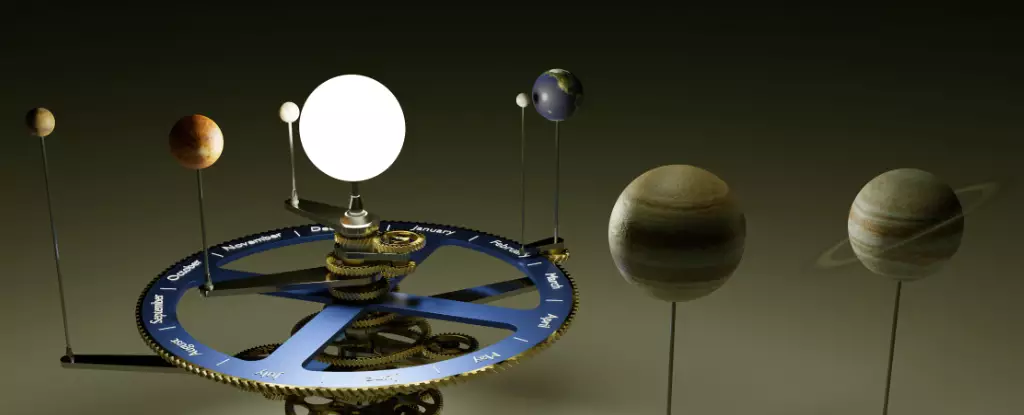The night sky is not only a source of wonder but also a celestial theater where planets perform a graceful dance, showcasing their beauty for all to admire. As we step into March, skywatchers are in for a treat, with the opportunity to see several planets lined up beautifully against the twilight backdrop. Amidst this celestial exhibition, Mercury re-enters the scene following its recent solar conjunction, marking a rare occasion where all naked-eye planets can be observed.
Typically, sightings of all the planets at once require meticulous alignment, heavily reliant on the slow-moving giants, Jupiter and Saturn. However, since their rare conjunction in December 2020, their separation has become more apparent, making this month’s planetary presentation even more special. Each evening throughout the latter part of February into early March offers a chance for enthusiasts and novice stargazers alike to explore our cosmic neighbors.
One of the highlights of this planetary showcase is the elusive Mercury. Following its solar conjunction on February 9, enthusiasts should turn their attention westward just after sunset to catch a glimpse of this swift inner planet. Mercury’s fleeting nature means that spotting it can often feel like chasing shadows. However, using the brilliant light of Venus as a guiding star can aid in locating it in the twilight sky.
On February 25th, Mercury will pass a narrow 1.5 degrees north of Saturn, providing an excellent photo opportunity for those with telescopes or cameras. And for those residing in Hawaii and the broader Pacific, March 1st promises an extra excitement as the waxing crescent Moon will occult Mercury. Such sightings share a narrative of mystery and challenge; after all, many have tried and failed to cross this mercurial planet off their astronomical bucket lists.
Mercury will reach its greatest elongation on March 8, where it will shine at an impressive magnitude of -0.35, almost 18 degrees away from the sun. Observers with telescopes will have the pleasure of seeing it as a half-illuminated disk of 7 arcseconds across.
As Mercury jockeys for position in the western sky, Venus will also grab the attention of spectators. The following week will see the crescent Moon glide south of Venus on March 2, creating a fantastic opportunity for daytime viewing of these two celestial bodies. Interestingly, a historical footnote reveals that attendees of President Abraham Lincoln’s second inauguration in 1865 noticed Venus during a cloudy midday—an early testament to the brilliance of this planet.
Completing the lineup, Mars will shine brightly in Gemini, standing out with its ruddy hue. With its recent opposition on January 16, Mars is becoming a mesmerizing feature of the evening sky. Those wishing to catch a glimpse of the Red Planet should look high to the east, where it will be visible throughout March. The waxy gibbous Moon will cross paths with Mars on March 9, making for an ideal photo-op as they illuminate the evening canvas together.
Further enhancing the evening’s allure, Jupiter stands tall in the southern skies, reigning majestically in the constellation of Taurus. With brightness reaching magnitudes that outshine most stars, it becomes the focal point for avid sky watchers. On March 6, the waxing near First Quarter Moon will accompany Jupiter, while the planet itself reaches quadrature with the Sun on March 2. The historical contributions of Danish astronomer Ole Rømer provide fascinating context, as he unveiled the importance of accommodating light travel time when predicting the events of Jupiter’s moons.
Despite its glory, the outermost planet, Saturn, poses a challenge for observers, lying low in the twilight glow. Once Mercury has been spotted, a search for Saturn using binoculars may yield rewarding results, though it will be three times dimmer than its swifter counterpart. As March progresses, Saturn will fade from view, leaving space for Mercury and Venus to rise in the dawn sky post their inferior conjunction on March 23 and 24.
For those who seek to complete their planetary collection, Uranus and Neptune are also within reach, albeit with a bit more effort. Uranus, at a +5.8 magnitude, can be spotted relatively easily in Taurus, while +7.8 magnitude Neptune resides near the horizon, requiring good conditions and patience.
As the month nears its end, we anticipate an exciting eclipse season ahead, with a partial solar eclipse slated for March 29 and a total lunar eclipse for March 14. This spring promises active nights filled with celestial phenomena, providing an enchanting backdrop for anyone keen on stargazing. As we take to the skies, may the mysteries of outer space inspire that sense of wonder we all hold dear. Let’s hope for clear skies and magical views as we embark on our celestial journeys.

